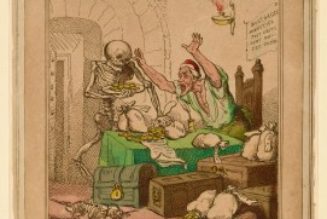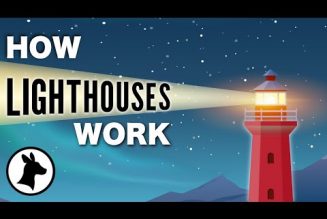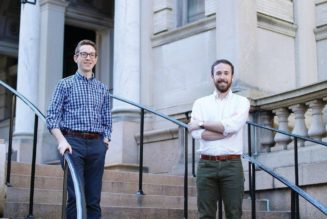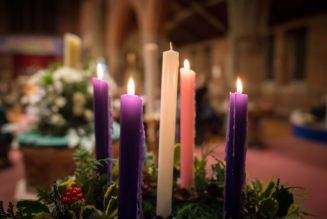By Peter Wolfgang ( bio – articles – email ) | Nov 02, 2024
Commonweal Magazine turned 100 years old this year! Can you believe it? Do you care?
I don’t blame you if you don’t care. Those of us who read (or write for) Catholic Culture are not exactly Commonweal’s target audience. As the New York Times writes in its laudatory piece on Commonweal’s centennial:
Commonweal Catholics were educated, liberal-minded and middle-class, and aspired to assimilate into elite culture while bringing their Roman Catholic faith, education and sensibility with them.
I don’t know that many of us identify as liberal or aspire to “assimilate into elite culture.” And I’m guessing a lot of us might question to what extent the dissident writers of Commonweal actually did bring “their Roman Catholic faith, education and sensibility with them” on their journey into assimilation. And to what extent they were, well, simply assimilated.
Nevertheless, I think Commonweal’s centennial is worthy of attention. Whether you are orthodox, a dissenter, conservative, liberal, whatever. The Times is right to take note of the “now-faded swagger of midcentury American liberal Christianity” and of the illustrious stable of writers that graced Commonweal’s pages during that era: “Dorothy Day, Thomas Merton, Hannah Arendt, Graham Greene, W.H. Auden and John Updike.”
Commonweal is an “independent lay-edited Catholic journal of opinion,” same as the webzine on which you are reading this article. In fact, Commonweal’s the oldest. Even if you don’t share Commonweal’s political and theological leanings—even if you find those leanings appalling—all of us who publish in the world of independent lay-edited Catholic opinion are, in a certain sense, standing on Commonweal’s shoulders.
Phases
I went through a brief phase in the mid 1990s where I would have called myself a “Commonweal Catholic.” It was already long past the midcentury golden age described by the Times. But the Times description of Commonweal “as a kind of Catholic version of The New Republic” resonates with me, for reasons different than those meant by the Times.
At the height of The New Republic’s Marty Peretz era, in the 1980s and ‘90s, it was a liberal magazine that would devote energy to criticizing those further to its left. The Nation magazine and The New Republic were not chummy.
Likewise, Commonweal in the ‘90s. It was a dissident magazine whose dissent only went so far. There were editorials ripping the pro-abortion front group “Catholics for a Free Choice.” Commonweal editor Peter Steinfels expressed criticism of the unhinged letters that appeared in the National Catholic Reporter.
America Magazine would occasionally publish dissident and orthodox writers side-by-side in the ‘90s. Say, Richard McBrien alongside Michael Novak. Or some now-forgotten feminist theologian alongside Mary Ann Glendon. But the articles by America’s usual writers never had the nuance you could find in Commonweal. Commonweal was a dissident publication but it wasn’t America Magazine or the National Catholic Reporter. It was…something else.
What it is now, I can’t say. I haven’t read it in years. By the late 1990s I had moved on to the more orthodox periodicals within the world of the Catholic press. And what a world that was!
Many Catholics my age are essentially autodidacts when it comes to our Catholicism. Even if we are cradle Catholics. We were the first generation to grow up immediately after Vatican II. Out with the Baltimore Catechism! In with…well, not much. Our catechetical instruction largely amounted to “Jesus loves you. Now go make a collage.”
I know quite a few who, upon reaching adulthood, filled the gaps in their religious education by watching EWTN. For me, it was the Catholic magazines. This, again, was the 1990s—the decade before the internet destroyed everything. Even apart from the three dissident publications I just named—even among the orthodox publications—the diversity was amazing.
First Things, Crisis Magazine and the National Catholic Register were the upbeat publications. Everything was coming up roses! We were living in the era of Pope John Paul the Great! The Third Millenium would be a New Springtime, a New Evangelization, etc.
New Oxford Review, Catholic World Report and The Wanderer were the downcast publications. They wondered what the other Catholic magazines were smoking. Didn’t they know the Catholic sky was falling?
Upbeat…or not
My heart was with the upbeat periodicals. But then we hit the first wave of revelations about clergy sex abuse in 2002. And then the second wave with the “everyone knew” scandal of “Uncle Ted” McCarrick in 2018. The upbeat stuff from the ‘90s looks quaint now. That second category of orthodox Catholic magazines, they were the prophets.
Again, I can’t speak to what the dissident Catholic periodicals are these days, because I hardly ever read them. But on the orthodox side, I think all that wild diversity, that back-and-forth in matters upon which there may be a legitimate plurality of opinion, is still there.
There is a crowd I think of as the Catholic New Left. Mostly bloggers or Substack authors. They can be cranky, straining at gnats, pedantic, with an axe to grind. But they are not the dissenters of my 1990s young adulthood. There is no Andrew Greeley or Rosemary Radforth Reuther among them, shaking their fist at the Magisterium for not accepting the Sexual Revolution.
And has anyone noticed how Crisis Magazine is slowly taking on a sort of William F. Buckley/National Review-like role on the Catholic Right? I mean that as a compliment. A key part of National Review’s early history was detoxifying the Right of its unsavory elements. Crisis Magazine under Eric Sammons is increasingly doing something similar for the Catholic Right. See this article and this one.
Of course, First Things does this too. But as I said in the chapter that I wrote for this book, Crisis Magazine “somehow manages to be the bad boy of the Catholic web without being fringe.” You don’t have to agree with Crisis on everything (I’m more pro-Israel than they are). But it’s precisely because of Crisis’ edginess that it means something more when they’re the ones calling out the fringe.
And of course, there are the writers at Catholic Culture itself. As I said of one of them in that CatholicVote book: “Phil Lawler does not suffer fools lightly. He is willing to say things out loud that few others will say, and to connect dots that few others will connect.”
So keep reading. And donating.
Sound Off! CatholicCulture.org supporters weigh in.
All comments are moderated. To lighten our editing burden, only current donors are allowed to Sound Off. If you are a current donor, log in to see the comment form; otherwise please support our work, and Sound Off!


 Peter Wolfgang is president of Family Institute of Connecticut Action, a Hartford-based advocacy organization whose mission is to encourage and strengthen the family as the foundation of society. His work has appeared in The Hartford Courant, the Waterbury Republican-American, Crisis Magazine, Columbia Magazine, the National Catholic Register, CatholicVote, Catholic World Report, the Stream and Ethika Politika. He lives in Waterbury, Conn., with his wife and their seven children. The views expressed on Catholic Culture are solely his own.
Peter Wolfgang is president of Family Institute of Connecticut Action, a Hartford-based advocacy organization whose mission is to encourage and strengthen the family as the foundation of society. His work has appeared in The Hartford Courant, the Waterbury Republican-American, Crisis Magazine, Columbia Magazine, the National Catholic Register, CatholicVote, Catholic World Report, the Stream and Ethika Politika. He lives in Waterbury, Conn., with his wife and their seven children. The views expressed on Catholic Culture are solely his own. 







